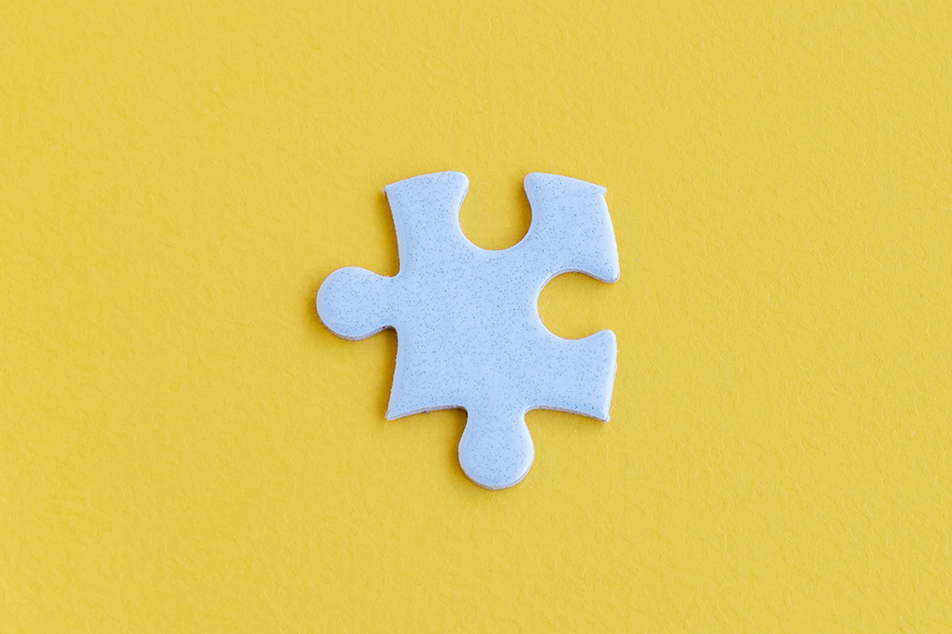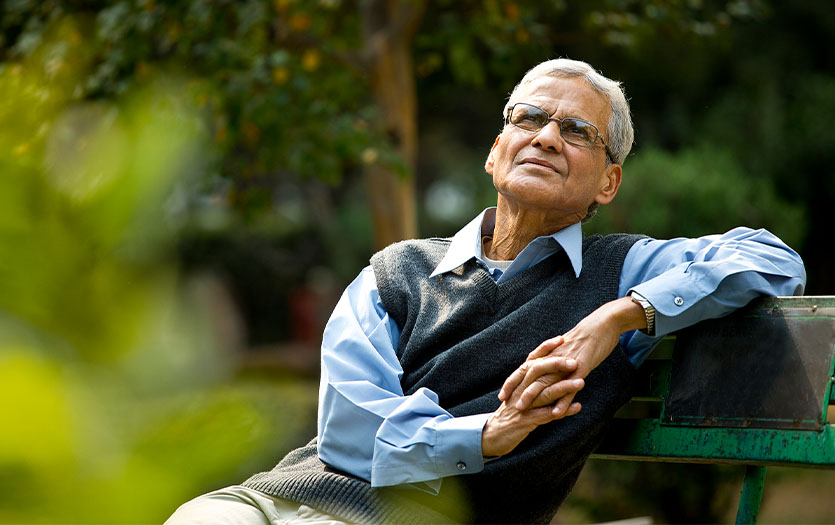
This post was written by Dave Johnson, PhD, CNS- BC, LMFT, employee assistance specialist, Parkview Health.
“Watch your thoughts, they become your words; watch your words, they become your actions; watch your actions, they become your habits; watch your habits, they become your character; watch your character, it becomes your destiny.” – Lao Tzu
As a licensed marriage and family therapist, I’m often consulted about the wisdom of setting New Year’s resolutions and the science of compliance around how to make them “stick.” I hear people vow to eat healthier, exercise more, quit smoking, learn a new skillset, improve relationships, etc. Perhaps you’ve set one of these yourself. And although intentional health goalsetting in and of itself is not a problem, the shame and self-esteem that seems to wane doesn’t feel good six weeks into a new year when one is back to living their “ordinary” life.
But will 2021 return things to ordinary? I for one don’t think so. In 2020, the world tipped on her axis more than a bit regarding healthcare, politics, race and social systems. Coming back to equilibrium or a new norm is needed. When I teach the practice and science of mindfulness (now virtually), folks often ask if I could give them one concrete practice that might help. Everyone knows they should eat healthy, exercise regularly, practice stress management, and get daily doses of good sleep and rest. But 2020 was anything but ordinary, and the anchors of our lives such as church, community, fun and family put us at odds with a virus that lurked in darkness and unfolded throughout many months of fear and chaos.
Tools for moving ahead
So, 2021 … what to do? I say, think through your Intentions with a puzzle piece and a word or two.
Mindfulness at its core is setting the intention of coming out of the thinking, overthinking, worried or anxious mind and sustaining a bit of presence using the senses (seeing, hearing, tasting, touching, smelling). Mindfulness pairs nicely with the attitude of compassion for self and others, which seems needed more than ever in a divided world in need of healing.
Mindful teachers often suggest the breath as an anchor for grounding awareness and helping one to be less reactive with words (internal mind battles vs. external hostilities). The words of my mother, my first mindfulness coach, were to take a slow, deep breath and count to ten so I wouldn’t say or do something I might regret. The breath is a great anchor for many, but for 2021, I say consider adding an inscribed puzzle piece (or similar object) as an anchor.
Crafting a reminder
I thought it might be useful to take a closer look at what using self-compassion and a word or phrase as an anchor with a puzzle piece might look like in a formal mindfulness practice.
- Sit. For this meditation, sit on the floor with a yoga mat or in a straight back chair, and get comfortable. Some meditators say sit in a dignified posture, but I believe the essence of finding and appreciating and noticing how one is sitting comfortably is what is needed. Closing your eyes can often be helpful for quieting the mind. I practice in natural light, but some people like a dimmed room or candlelit space.
- Breathe. Take 2-3 slow and gentle cleansing breaths. Notice the movement of air coming in through the nose, which cleans, moistens and warms the air. Slowly exhale as if you are blowing through a straw. This helps to bring a cascade of slowing down to our breathing and our bodily functions, and prepares you for a formal mindful meditation practice session. Recognize how the body breathes effortlessly on autopilot without our noticing, but for a few deep breaths you can enter an awareness of intentionally breathing your body. Notice the flow and rhythm and pattern with this intentional slowing.
- Ponder. Choose a healing or soothing word to ponder. Often it’s best to choose a word and commit to this word throughout the practice session. This prevents one’s mind from second-guessing or flip flopping words, and hinders obsessing on finding a different word once the practice has begun. I have used the word “one” for years; it has a spiritual meaning for me. I have patients who have chosen words like “gentle,” “kind,” “love,” “tender,” “slow,” “relax,” “peace,” “mercy,” “trust,” “God,” “Jesus” and other spiritual names. Healing phrases folks have used, include “let it be,” “be still,” “have mercy,” “let go and let God,” “I am loved,” etc. One can explore different words or phrases in ongoing practice sessions, but having a go-to word or phrase that you use over and over seems to make the process easy for to repeat again and again.
- Find. Locate a puzzle piece. Beyond making a puzzle as a soothing past time, I like the metaphor that the puzzle reminds me to think through. Each shape is unique, connects with a few others, in and of itself non-descriptive of the whole picture, but certainly missed if lost and not added to complete the bigger picture. With the metaphor, I am reminded I don’t know what I don’t know and that as life reveals itself over time, more pieces come together to help me begin to see how everything is somehow connected.
- Hold and inscribe. Printing or calligraphing the word on the puzzle piece cements that I am setting intention. Holding the one puzzle piece in my non-dominant hand with my inscribed word can help to anchor mindful intentions for the sitting practice. Like a prayer, scripture or mantra, what I print on the puzzle piece can help me to anchor my intentions for the day, week or perhaps the lifetime journey.
- Savor. It may seem a bit odd, but I encourage folks to savor their word or phrase by gently rolling it back and forth in their mind in the rhythm or pattern of their breath. If the mind becomes engaged in other thoughts or preoccupations, ever so gently return to the soothing, chosen word. The smoothness of the shiny surface of the puzzle piece will be a token reminder that life has many details and uncertainties, but for now you just have to focus on one word or phrase to gently soothe the spirit of your life.
- Self-compassion. People often complain that it’s challenging when they realize how often their mind drifts and they become discouraged. I reinforce that this is why we call mindfulness a practice. Gently and kindly note that the mind has drifted and come back to the chosen word; This is the purpose of the exercise. Strengthening the mindful muscle takes time. Learning to be kind and compassionate with self is part of the practice. Think of how you would be kind and gentle to a good friend or family member and how this same attitude of loving kindness can be carried forward and given to yourself.
- Be still. After a 10-20-minute practice session, remain in silence with your eyes open for another minute. Fully engage an appreciation of all senses (sight, sound, smell, taste, touch). Appreciate a bit of slowing. I often have my cup of tea or coffee nearby or a scripture or journal to ponder or linger a bit longer. For me, this is the most important part of the practice, re-entering my life a bit refreshed, renewed and connected.
As I finish some of my thoughts on using a healing word or phrase, I’m flooded with memories of many clients who throughout the years had great emotional pain often inflicted by the words of others or of their self-negative cognitions. In 2020, I watched a media frenzy and noticed how words can divide or heal, incite fear or hope, promote chaos or clarity. I recognize that I have no power to control the words of others, but I can choose to listen or not, to tune in or tune out. My power and resilience starts with me noticing and choosing words that heal and bring hope, perhaps first to myself, then to my circle of influence.
Resources
Mindfulness-based stress reduction practice has been extensively researched and proven helpful for coping with stress and change, grief, healthy eating patterns, pain, anxiety, depression and many other chronic disease and autoimmune disorders. For a free 1:1 phone consultation with me or to sign up for free group practice sessions contact the Parkview Center for Healthy Living at 260-266-6500.
Sources
Germer, C. K. (2009). The mindful path to self-compassion: Freeing yourself from destructive thoughts and emotions. New York: Guildford Press.
Follow Integrate Mindfulness on Facebook, for posting of mindfulness and healing exercises from Dr. Dave.



